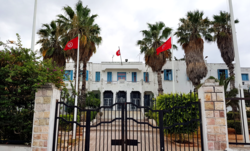
Tunis is the capital and largest city of Tunisia. The greater metropolitan area of Tunis, often referred to as "Grand Tunis", has about 2,700,000 inhabitants. As of 2020, it is the third-largest city in the Maghreb region and the eleventh-largest in the Arab world.

The Tunisian Cup, formerly known as Tunisian President Cup (1956–2011), is the premier knockout football competition in Tunisian football, organized annually by the Tunisian Football Federation (FTF), which is considered the second most important national title after the Tunisian Ligue Professionnelle 1. The reigning champions are Stade Tunisien, who won their seventh title at the 2023–24 season.
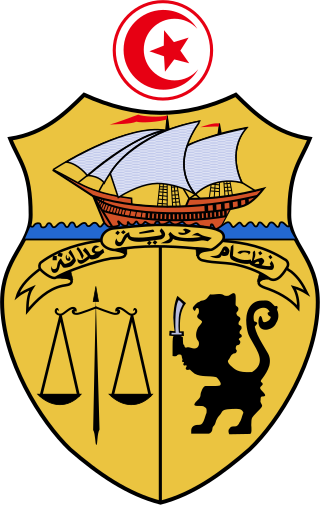
The delegations of Tunisia are the second level administrative divisions of Tunisia between the governorates and the sectors (imadats). As of 2006 there were 24 governorates which were divided into 264 delegations and further divided into 2073 sectors. The delegations are listed below, organized by governorate.
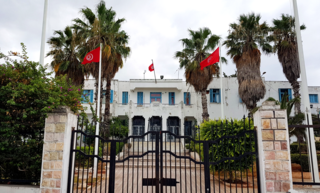
Ettadhamen-Mnihla is a former municipality of the governorate of Ariana attached to the agglomeration of Tunis before being divided in 2016 into two distinct municipalities: Ettadhamen and Mnihla.
Douar Hicher is a town and commune in the Manouba Governorate, Tunisia. It is known for the important political role that its inhabitants, especially the youth, played in the manifestations during the Tunisian revolution between December 2010 and February 2011.
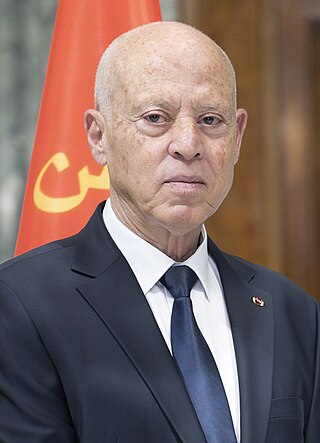
Kais Saied is a Tunisian politician, jurist and retired assistant professor of law currently serving as the seventh president of Tunisia since October 2019. He was president of the Tunisian Association of Constitutional Law from 1995 to 2019.

Mohamed Mrad is a Tunisian actor and model, best known for his role of Mahdi Ben Salem in the Television series Naouret El Hawa.
Amira Charfeddine is a Tunisian novelist. Her first novel, Wild Fadhīla, was written in Tunisian Arabic and is the first major Tunisian novel to feature a gay protagonist. The novel was commercially successful, selling 2,000 copies within a month of its release in April 2019. It was awarded the Ali Douagi prize from the Derja Association for best work written in Tunisian Arabic in 2019.

Al-Khalidiah is a low-income residential neighborhood in southeastern Riyadh, Saudi Arabia, located south of as-Sinaiyah and west of al-Faisaliyyah in the sub-municipality of al-Batʼha. It emerged as an offshoot of Hillatal-Anouz and was renamed in the 1980s after King Khalid bin Abdulaziz. It is today inhabited mostly by overseas Indian, Pakistani, Bangladeshi and Yemeni migrant workers and their families.

Al-Malaz, formerly al-Riyadh al-Jadidah and the Red Sea neighborhood, is a commercial and residential neighborhood in Riyadh, Saudi Arabia, and the seat of the homonymous sub-municipality of al-Malaz. Named after the al-Malaz Square, it was built in the 1950s by King Saud bin Abdulaziz as a housing project for government employees and was later developed into a full-fledged district. The neighborhood has a large presence of overseas Syrian community alongside native Saudi nationals.
Tunis is a village in Sohag Governorate, Egypt located in the Sohag Markaz. In 2006 it was inhabited by 19 495 people.
Abdel Halim Al Masoudi, he is known as Al Zoghlami, was born on July 1, 1965, in Jérissa, which is located in the Tunisian province of El Kef. He is a writer, theater critic, university professor and producer of television cultural programmes.

Hassan Husni bin Saleh bin Abd al-Wahhab bin Yusuf Al-Samadhi Al-Tujibi. He was born in Tunis, on Monday 27 Ramadan 1301 AH / 21 July 1884 AD, and died there on Saturday 18 Sha’ban 1388 AH / 9 November 1968 AD. a Tunisian writer, linguist and historian, his name is compound: Hassan Husni.
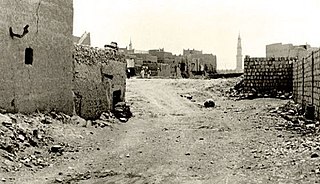
Hillat Al-Duhairah, alternatively transliterated as al-Zuhayri, was a neighborhood and a douar partially within the former city walls that is under rehabilitation in southern Riyadh, Saudi Arabia. Located in close proximity to the Qasr al-Hukm District in the old city region, the ruins of the area today constitute a large chunk of ad-Dirah neighborhood. Bordered by al-Suwailem Street to the west and ad-Duhairah Street to the east, most of its residents abandoned the area during Riyadh's multiple phases of expansion and modernization, especially between 1950s and 1970s. As of 2024, Duhairah still remains unrecognized by Riyadh Municipality.
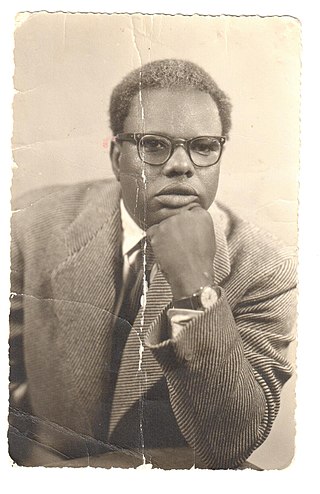
Taher Abdul Rahman Zamakhshari is a contemporary Saudi poet and writer. He was born in Makkah Al-Mukarramah on Rajab 27, 1332 AH - June 22, 1914 AD and died in 1407 AH - 1987 AD. He is one of the prominent inventive in the field of literature, especially poetry in the Kingdom of Saudi Arabia, and the Hejaz region in particular He is considered one of the first generation that established a creative movement in Saudi Arabia, whether in the literary or media fields. He was an Afro-Saudi.
Anis Chouchène is a Tunisian poet and activist, who gained recognition for his "thought-provoking" and "revolutionary" poems. He is known for addressing various social and political issues in his works, including slavery, racism, human rights, citizenship, peace, and the decline of Arab society.

The walled town of Riyadh was the original core of Riyadh, the modern-day capital of Saudi Arabia, located on the western edge of Wadi al-Batʼha in present-day districts of ad-Dirah and ad-Doho. It emerged from the city-state of Migrin around 1746 when Dahham ibn Dawwas built a wall and a mudbrick palace within it, and ruled as the settlement's chieftain until his overthrow by the First Saudi State in 1773. It was later the center of power of the Second Saudi State for most of 19th century following brief Ottoman presence in the Najd. Abdulaziz ibn Saud recaptured the town in 1902 and made it the base for his 30-year long unification wars that led to the establishment of Saudi Arabia in 1932. The town served as the administrative center of the Saudi government before King Abdulaziz ibn Saud moved his workplace and residence to the Murabba Palace in 1944. In 1950, he instructed the dismantling of the fortifications in order to expand the settlement into a metropolis and the walled town eventually ceased to exist. The area covering the perimeters of the erstwhile town was renamed as the Qasr al-Hukm District in 1973 with the aim of preserving its historical and architectural significance.

Olfa Hamdi is a Tunisian center-right politician and businesswoman born in the city of Gafsa in southern Tunisia. She is an international expert in capital project management. She previously held the position of President and general manager of Tunisian Airlines.

Mnihla is a municipality and commune in the Ariana Governorate, part of the Greater Tunis metropolitan area.

Jund al-Khilafah in Tunisia also known as Islamic State – Tunisia Province is a militant organization affiliated with the Islamic State based in Tunisia.
